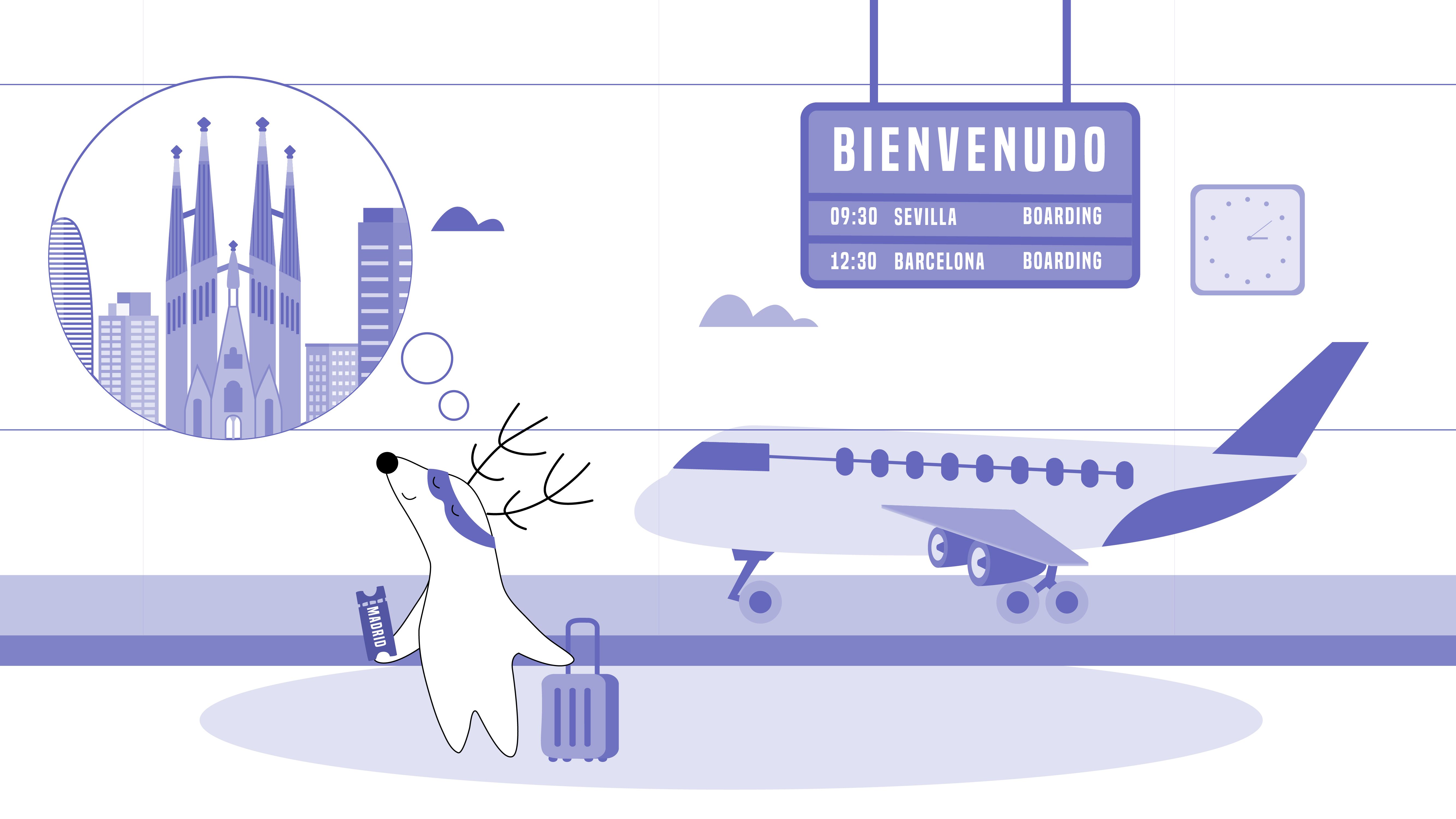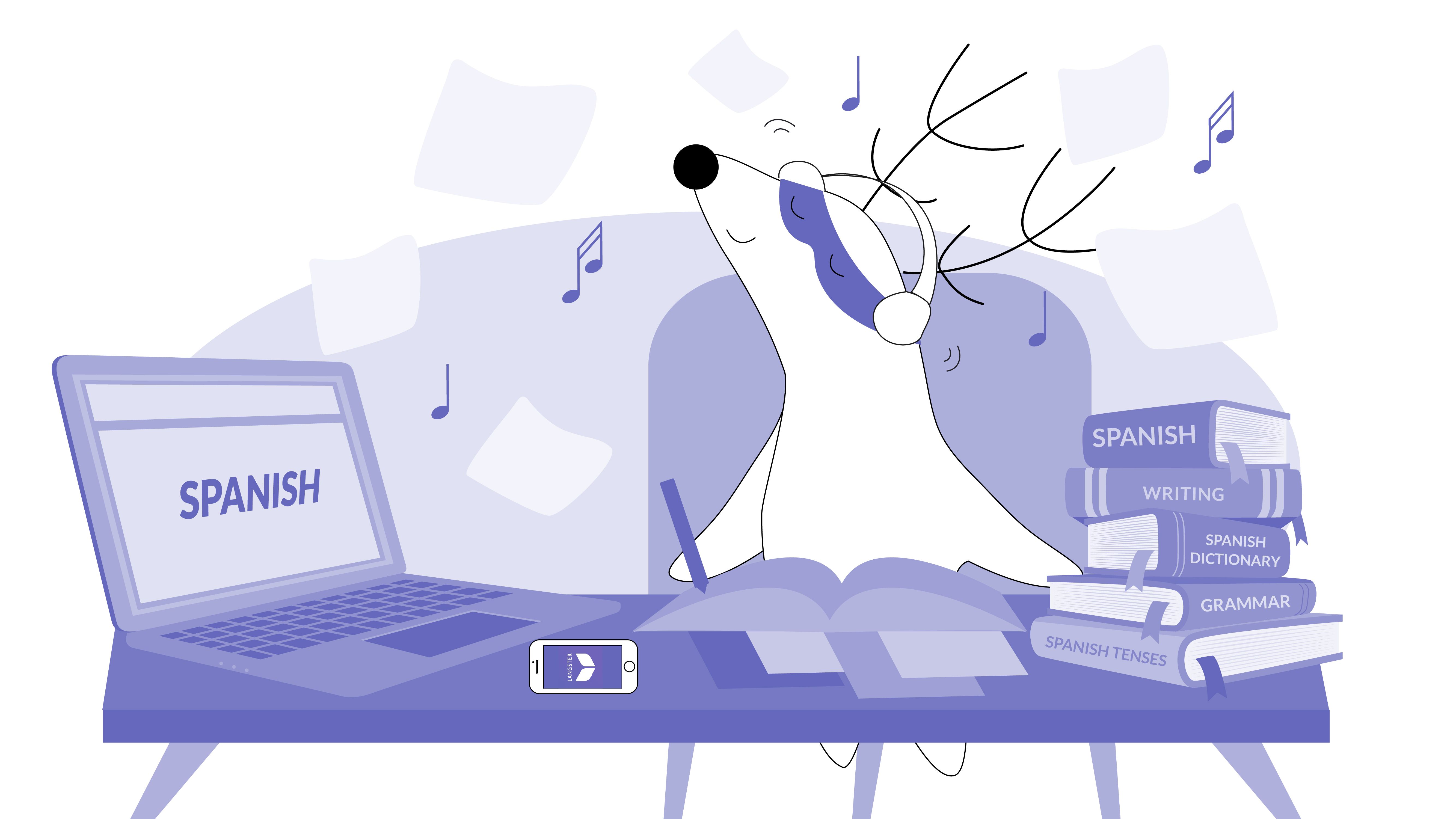
Are you ready to embark on an exciting linguistic journey and learn a new foreign language? Whether you're a passionate traveler, a language enthusiast, or simply looking to expand your communication skills, learning how to speak Spanish is a rewarding and life-changing endeavor.
With over 590 million speakers worldwide and a rich cultural heritage, Spanish is one of the most widely spoken and influential languages not only in Latin America but in the world.
In this article, we will reveal the best way to learn Spanish, guiding you through the most effective techniques, resources, and strategies that will have you conversing like a native speaker in no time. So, ¡vamos! Let's dive into the vibrant world of Spanish language learning and unlock the best way to learn Spanish.
Learn Spanish with Langster
Why You Should Learn Spanish Today
Spanish is the official language of 21 countries, including Spain, Mexico, and much of Central and South America. By learning Spanish, you gain access to a rich and diverse range of cultures, histories, and perspectives from around the world, giving you the opportunity to connect with native Spanish speakers (and non-natives, too!) in a seamless way.
Expanding Global Reach
Spanish is the second-most spoken language in the world by number of native speakers and the third-most spoken language by total number of speakers. With over 460 million native speakers and 21 countries where it is the official language, learning Spanish can significantly broaden your personal and professional horizons.
Travel Opportunities
If you love traveling, knowing Spanish can enhance your experiences in popular destinations such as Spain, Mexico, and South America. Being able to communicate with locals will help you navigate, explore hidden gems, and immerse yourself in the culture more deeply.

Business and Career Prospects
Spanish is an essential language in the global business landscape. As the economies of Latin American countries continue to grow, fluency in Spanish can open doors to new career opportunities and increase your marketability in various industries.
Rich Cultural Experience
Learning Spanish allows you to experience the wealth of Hispanic literature, cinema, music, and art firsthand. By understanding the language, you'll gain a deeper appreciation for the cultural nuances and history that have shaped the Spanish-speaking world.
Improved Cognitive Skills
Studies have shown that learning a second language can boost cognitive abilities such as problem-solving, critical thinking, and multitasking. Moreover, bilingualism has been linked to improved memory and a decreased risk of age-related cognitive decline.
Easier Language Acquisition
Spanish is a Romance language, closely related to other languages like Italian, French, Portuguese, and Romanian. Once you've mastered Spanish, picking up another Romance language becomes significantly easier due to shared vocabulary and grammatical structures.
Enhanced Communication Skills
Learning Spanish can help improve your overall communication skills, as it requires you to think and express yourself differently. This newfound linguistic flexibility can translate into more effective communication in your native language as well.
New Connections
Speaking Spanish enables you to connect with millions of people across the globe, fostering friendships, professional relationships, and cultural exchanges that can enrich your life in countless ways.
Make Use of Apps
Apps are a great tool for learning Spanish, particularly for those with a short attention span, for several reasons.
Firstly, mobile apps are designed to be engaging and interactive, with features such as gamification that make learning feel like a fun and rewarding experience. This can help keep users interested and motivated, even if they struggle to maintain focus for extended periods.
Secondly, apps are convenient and accessible, allowing users to learn on the go, whenever and wherever they have a spare moment. This means that even if you have a busy schedule, you can still fit in short bursts of language learning throughout your day without having to set aside dedicated study time.
Thirdly, apps can offer a personalized learning experience, with features such as progress tracking, personalized feedback, and customized lesson plans. This can help users stay engaged and motivated by providing them with a clear sense of their progress and achievements.
There are many mobile apps that make it easy to learn Spanish, wherever you are. For example, Langster is an app (and now it has a great web version!) where you can quickly master the basics of the language using real-life resources like interesting stories. In addition to honing your reading skills, you can practice your pronunciation, spelling, and grammar all in one place!
Immerse Yourself
Immersing yourself in the Spanish language is a powerful way to learn quickly, even if you don't live in a Spanish-speaking country.
You can use many different strategies to create an immersive learning experience, from consuming media in Spanish to practicing conversation with native speakers.
Watch Spanish TV Shows
One of the easiest ways to immerse yourself in the language is by listening to Spanish-language TV shows or radio broadcasts. This is a great way to expose yourself to native speakers, learn new vocabulary and phrases, and get a feel for the rhythm and intonation of the language.
You can start by listening to news broadcasts, podcasts, or music in Spanish, and gradually work your way up to more complex content like TV shows and movies.

Don't Forget About Movies
Watching movies with Spanish subtitles is another effective way to learn quickly. This technique can help you improve your reading and listening comprehension while also providing you with a more authentic experience of the language.
Try watching movies with Spanish audio and English subtitles, or vice versa, to gradually increase your comprehension and get used to the rhythm and pace of spoken Spanish.
Read Books
Reading books written in Spanish is also a great way to immerse yourself in the language and learn Spanish vocabulary. Start with simple books or children's stories, and gradually work your way up to more complex literature.
This can help you build your vocabulary, improve your grammar, and develop a deeper understanding of the culture and history of Spanish-speaking countries.
Chat With Native Speakers
Finally, chatting with native speakers online or in your area is one of the most effective ways to practice speaking skills and reach Spanish fluency. There are many language exchange apps and websites that can connect you with Spanish speakers from around the world and help you find a language partner.
You can also look for local language exchange groups or conversation partners to practice your Spanish in person or even hire a Spanish teacher to learn how to speak Spanish fast. Speak Spanish as much as you can; soon, you'll see how many Spanish words you have learned and how much you have advanced!
Make Learning Fun
Don’t forget to have fun while learning Spanish! You could try creating a language exchange group with friends, or attending Spanish-language events in your local community.
If you’re feeling daring, why not challenge yourself by signing up for a Spanish course? Whatever you do, keeping learning interesting and engaging will help ensure that you progress quickly, with or without a Spanish tutor.
Main Challenges When Learning Spanish
Learning Spanish, like any other language, comes with its own set of challenges. Here are some of the main obstacles you may encounter on your journey to mastering Spanish:
Grammar
Spanish grammar can be complex and challenging for learners, particularly when it comes to verb conjugation, noun gender, and the proper use of articles and prepositions.
Additionally, Spanish has a range of tenses that may not exist in other languages, which can be difficult to master.
Pronunciation
Spanish pronunciation can be difficult for some learners, especially when it comes to certain sounds that don't exist in their native language.
Examples include the trilled "r," the "ñ" sound, and the distinction between "b" and "v."
Rolled R sound
In Spanish, the letter "r" is pronounced differently than in English. Instead of being pronounced with the tip of the tongue against the roof of the mouth, the Spanish "r" is pronounced by vibrating the tongue against the alveolar ridge, the bony ridge behind the upper teeth.
This creates a distinctive rolling sound that can be challenging for learners to master. To practice this sound, try saying words like "perro" (dog) or "carro" (car) while emphasizing the "r" sound.
Spanish
English
Perro
Dog
Carro
Car
Rojo
Red
B and V sounds
In Spanish, the letters "b" and "v" are pronounced very similarly, often leading to confusion for learners. Both are pronounced by pressing the lips together and releasing a small amount of air, but the "v" sound is pronounced more softly and with less force.
To practice this sound, try saying words like "vino" (wine) and "bien" (well) and focusing on the difference in the way you produce the sounds.
Spanish
English
Vino
Wine
Vaca
Cow
Bote
Boat
Bloque
Block
LL and Y sounds
In some Spanish-speaking countries, the letters "ll" and "y" are pronounced differently, while in others they are pronounced the same.
The sound is similar to the "y" sound in English, but with more emphasis and often a slight curl of the tongue. To practice this sound, try saying words like "lluvia" (rain) or "ayer" (yesterday).
Spanish
English
Lluvia
Rain
Ayer
Yesterday
Vocabulary
Spanish has a vast vocabulary, and learners may struggle to memorize all of the words and phrases they need to communicate effectively.
Additionally, Spanish has many idiomatic expressions and colloquialisms that may not translate directly to other languages.
Idiomatic expressions
Spanish is full of idiomatic expressions that may not make sense when translated literally. For example, estar en las nubes means "to be daydreaming" in English, while dar la mano means "to shake hands."
Learning these expressions and understanding their meanings is key to communicating effectively in Spanish.
Colloquialisms
Spanish also has many colloquialisms that may not be taught in traditional language classes but are commonly used in everyday conversation.
For example, in some parts of Spain, the phrase qué tal is commonly used to mean "hello" or "how are you?", while in other parts of the Spanish-speaking world it may have a different meaning. Other examples of colloquialisms in Spanish include chido (cool), tío (dude), and guay (awesome).
Regional Variations
Spanish is spoken in many different countries and regions, and each has its own unique accent, vocabulary, and grammar. This can make it challenging for learners to understand and communicate with Spanish speakers from different regions.
Colombia
Spanish in Colombia has a distinct rhythm and intonation, and the country is known for its use of voseo, which means using vos instead of tú when addressing someone informally.
In addition, there are many regional variations in vocabulary and expressions throughout the country. For example, in the coastal city of Cartagena, people may say parcero instead of amigo to mean friend.
Argentina
Spanish in Argentina is known for its unique intonation, and the country is also known for its use of vos instead of tú when addressing someone informally.
Additionally, Argentine Spanish has many unique expressions and vocabulary that are not commonly used in other Spanish-speaking countries. For example, che is a common interjection that means "hey" or "dude."

Spain
Spanish in Spain also has many regional variations in terms of vocabulary, pronunciation, and grammar. For example, in Andalusia, people may use the diminutive -illo ending to convey affection or emphasis, such as cervecita (little beer) instead of cerveza (beer).
Additionally, the "s" sound in some parts of Spain is pronounced like a "th" sound in English, which can take some getting used to for learners.
Confidence
Finally, many learners of Spanish may struggle with confidence, particularly when it comes to speaking and listening. It can be intimidating to communicate in a new language, and learners may feel self-conscious about making mistakes or being misunderstood.
Despite these challenges, with dedication and practice, learners can overcome these obstacles and become proficient in Spanish. By focusing on grammar, pronunciation, vocabulary, and cultural awareness, learners can build their confidence and communication skills, and ultimately achieve fluency in the language.
The Bottom Line

In conclusion, the best way to learn Spanish involves a combination of effective strategies, dedication, and persistence. By using a diverse range of resources, such as language courses, apps like Langster, books, and media, alongside real-life practice, you can accelerate your progress and make the learning experience more enjoyable.
Embrace the challenges that come with learning Spanish, and remember that every small victory brings you closer to fluency!
Learn Spanish with Langster









